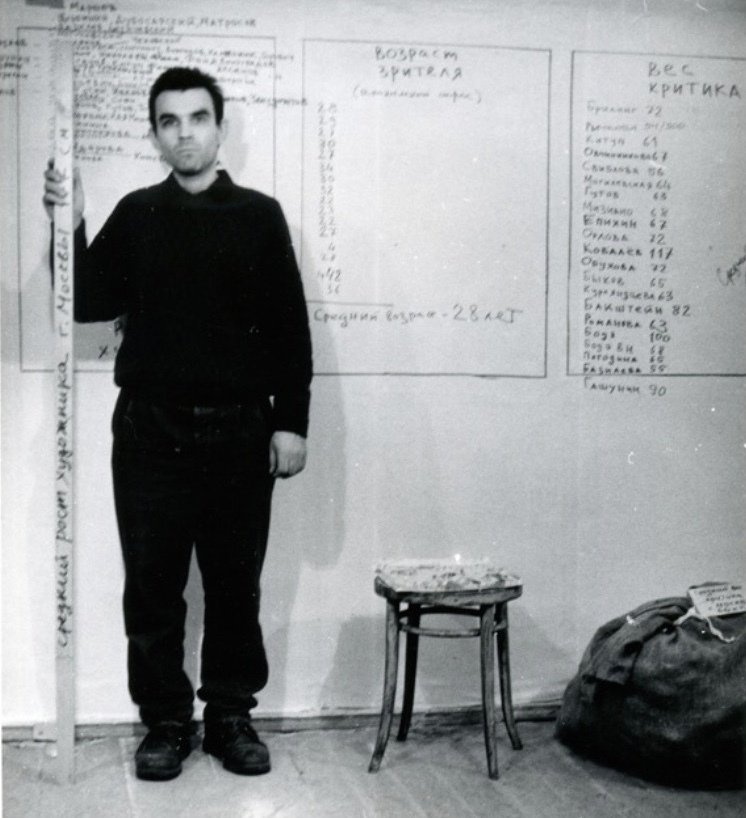Alexander Sigutin Hierarchy in Art
Date

Alexander Sigutin’s project Hierarchy in Art ironically explored the universal competitive attitude of the milieu, where every artist dreams of standing above the rest, and every art historian is aiming to gain professional weight.
Sigutin invited artists to measure their height. The resulting table revealed the leaders in art: the tallest artist was from the Netherlands. Amusingly, a representative of Western art turned out to be taller than the locals. Later, Sigutin aggregated all the data and calculated the average height of a Moscow artist—167 cm.
For art critics, curators, and art historians, he devised a different procedure to measure professional qualities. They were to be weighed to determine the degree of their art world gravitas. The leader was critic Andrei Kovalev. According to the results of measuring the art historical circle, the average weight was 66 kg.
The project also explored the audience for contemporary art, serving as a kind of sociological tool for understanding who takes an interest in such a peculiar practice. Visitors recorded their age—ranging from schoolchildren to pensioners—in another table.
Concluding the project, Sigutin created his own “chamber of measures and weights:” a wooden pole corresponding to the height of the average artist and a sack of potatoes equivalent to the weight of the average critic. The audience was represented by a cake with 28 candles marking the average age of visitors to the gallery in Tryokhprudny Lane.
In this way, Hierarchy in Art aimed to analyze the phenomenon that art historian Viktor Misiano called the "tusovka"—the main driving force behind the artistic process of the 1990s.
ABOUT THE GALLERY ON TRYOKHPRUDNY
The gallery on Tryokhprudny Lane became a meeting point for the artistic community, which, after many years of stagnating cultural processes and ideological prohibitions, was in need of vibrant and memorable events.
Tryokhprudny brought together people representing a wide range of artistic movements and trends. Seasoned members of the younger generation of conceptualists, who had already achieved international success and whose history was connected to the APTART Gallery, came here. Arrogant, radically-minded Moscow actionists also appeared, as did equally self-assured young art historians—Moscow State University students who were taking their first steps into a somewhat closed professional circle. Elegant partygoers and fans of the neo-avant-garde, whose names history has not preserved, would also drop by. Independent poets, rock musicians, theater people, and even officials from the Ministry of Culture were all keen to attend Tryokhprudny Thursdays. In the meantime, the artists who inhabited the studios—rather exotic figures, representing regional art schools on the Moscow art scene—found their place in the capital’s art world through strategies of interaction and drew more and more personalities into their orbit.
The gallery on Tryokhprudny was a place where an entirely new environment took shape, where important liaisons were born and the most pressing issues in the development of contemporary art were discussed. Friendly conversations and polemical discussions attracted a wide audience that shaped the art scene of 1990s Moscow.
